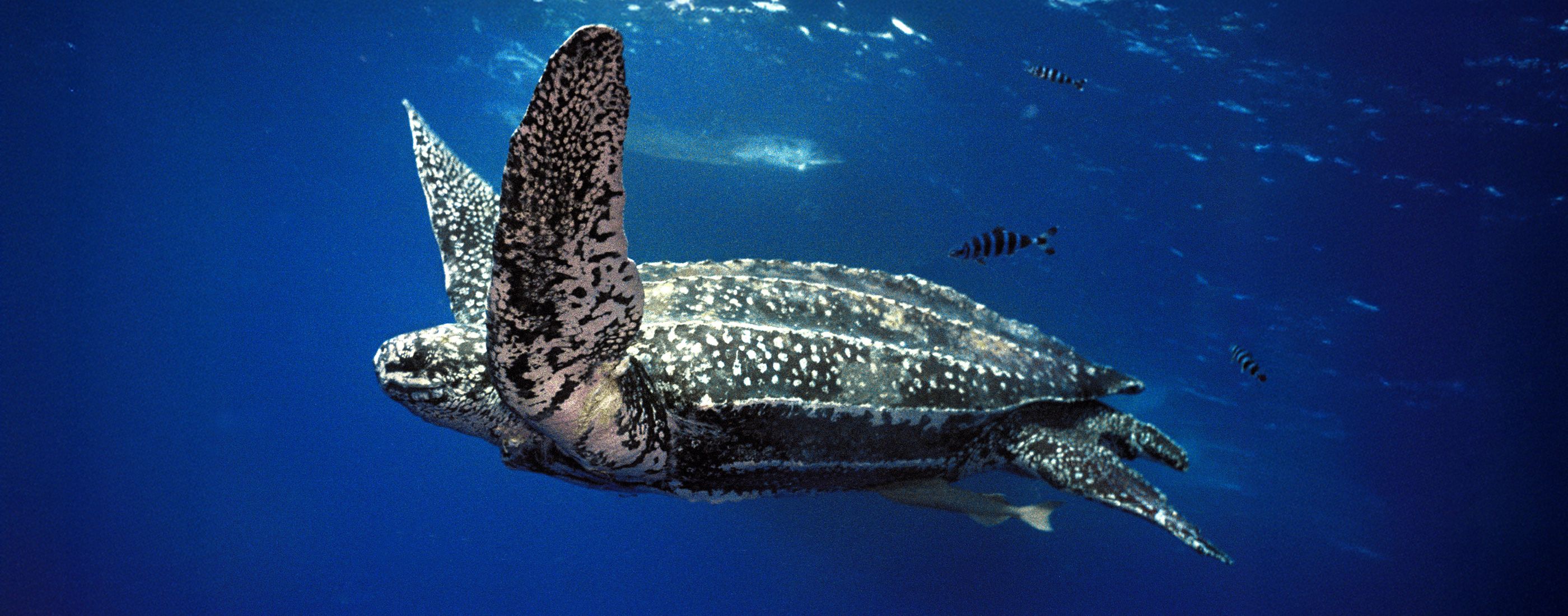
Guyana Sea Turtle Project
STATUS
Ongoing / Partner Program
Region
Almond Beach, Guyana
Protected Species
Leatherback Sea Turtle
Dermochelys coriacea
Vulnerable
Green Sea Turtle
Chelonia mydas
Endangered
Hawksbill Sea Turtle
Eretmochelys imbricata
Critically Endangered
Olive Ridley Sea Turtle
Lepidochelys olivacea
Vulnerable
About the Program
The Leatherback Sea Turtle (Dermochelys coriacea) is the largest pelagic turtle in the world with individuals sometimes reaching more than six feet long and weighing as much as 1,400 pounds. The species is found in the Pacific, Indian, and Atlantic oceans and is one of the most migratory species. Even though their distribution is very wide, the numbers of Leatherback Sea Turtles have decreased during the last century.
Almond Beach is in Guyana and is part of the 75 miles stretch of beach and mudflats referred to as Shell Beach. This is the nesting ground for four of the world’s eight endangered species of marine turtles. From March through August of each year, Leatherback, Green (Chelonia mydas), Hawksbill (Eretmochelys imbricata) and Olive Ridley sea turtles (Lepidochelys olivacea) can be found on this mile-long stretch of coast. Fortunately, all four of those species are protected in Guyana by the Fisheries Act of 2002 and Protected Areas Act of 2011. In addition to the sea turtle species, an unheralded variety of biodiversity species living in the protected area includes jaguars, sloths, harpy eagles, and red ibis.
Help us raise funds to help this important initiative
Fundraising Goal: $30,000
To support gear for research season 2025
Donate Now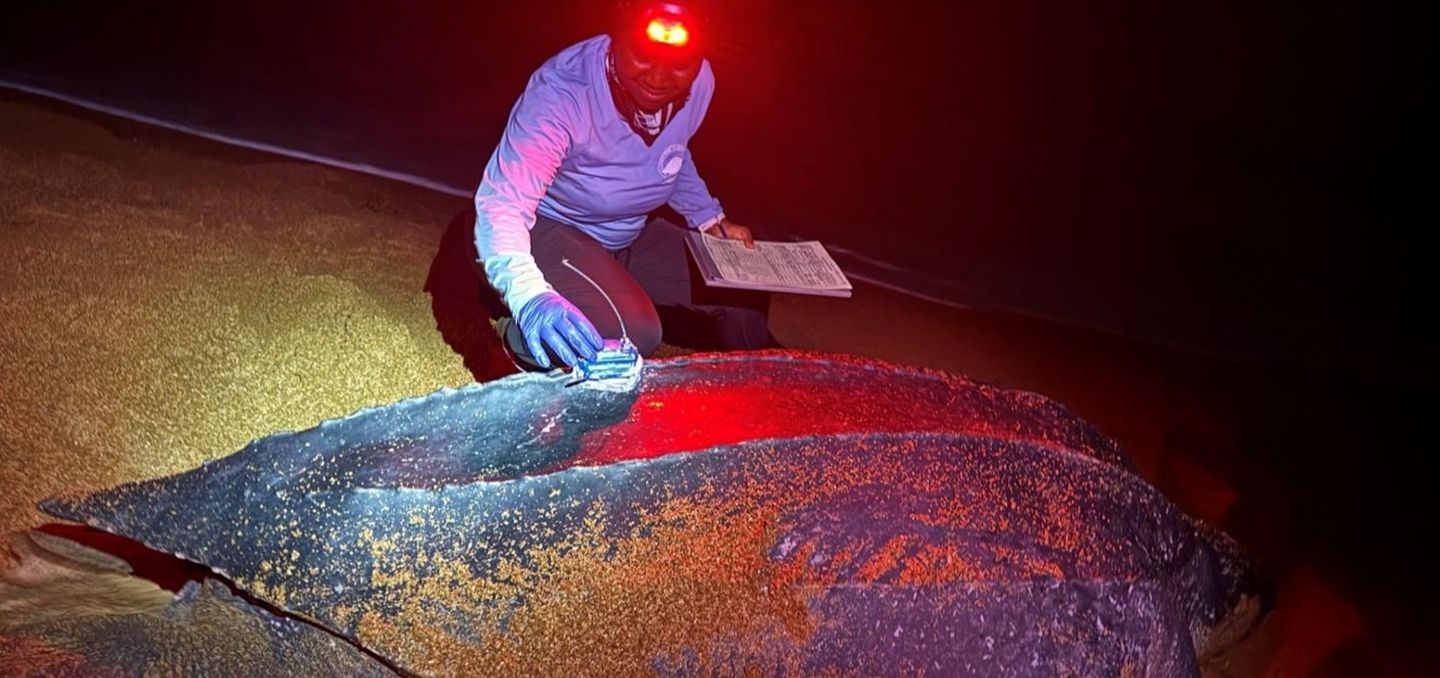
The main threats to sea turtles are fisheries bycatch. Every year, hundreds of thousands are accidentally trapped in nets and other fishing gear. Habitat loss and disturbance, for instance—due to global warming, beach erosion, coastal development, and other human-related activities on beaches—disrupt nesting season. Unfortunately, sea turtle eggs are also still consumed by locals, seriously threatening populations.
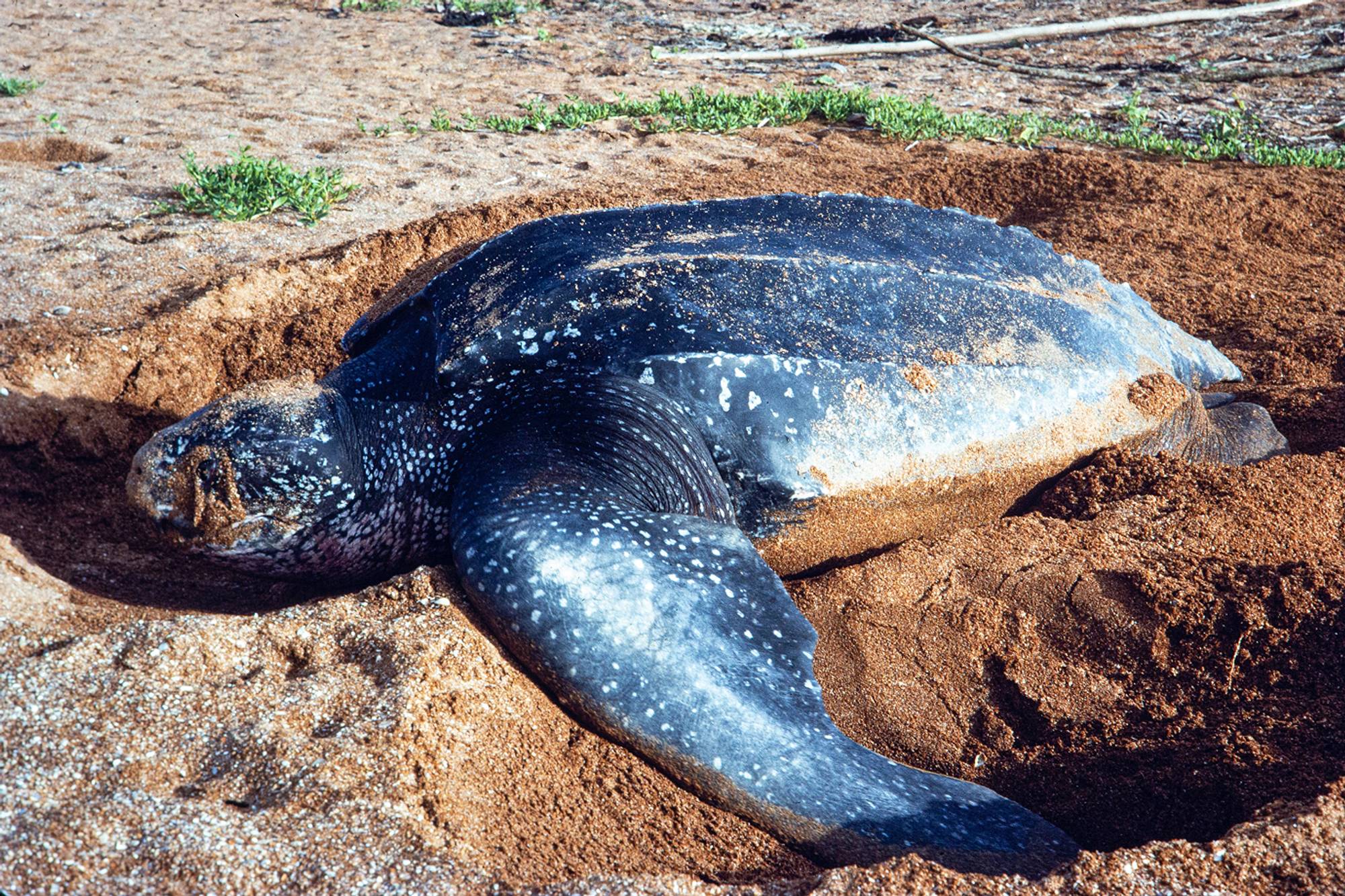
A female Leatherback laying eggs
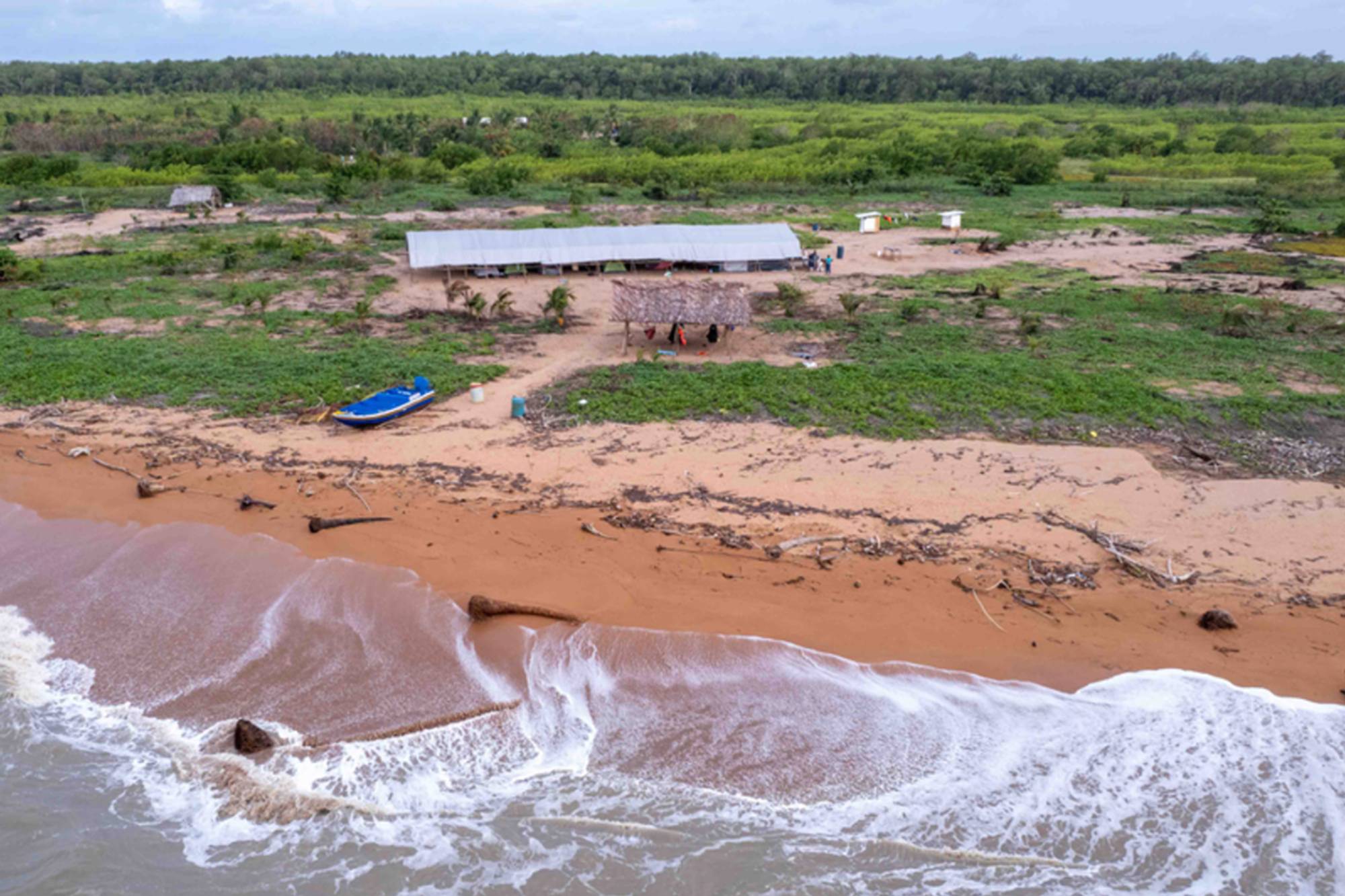
One of the beaches used by the turtles for nesting
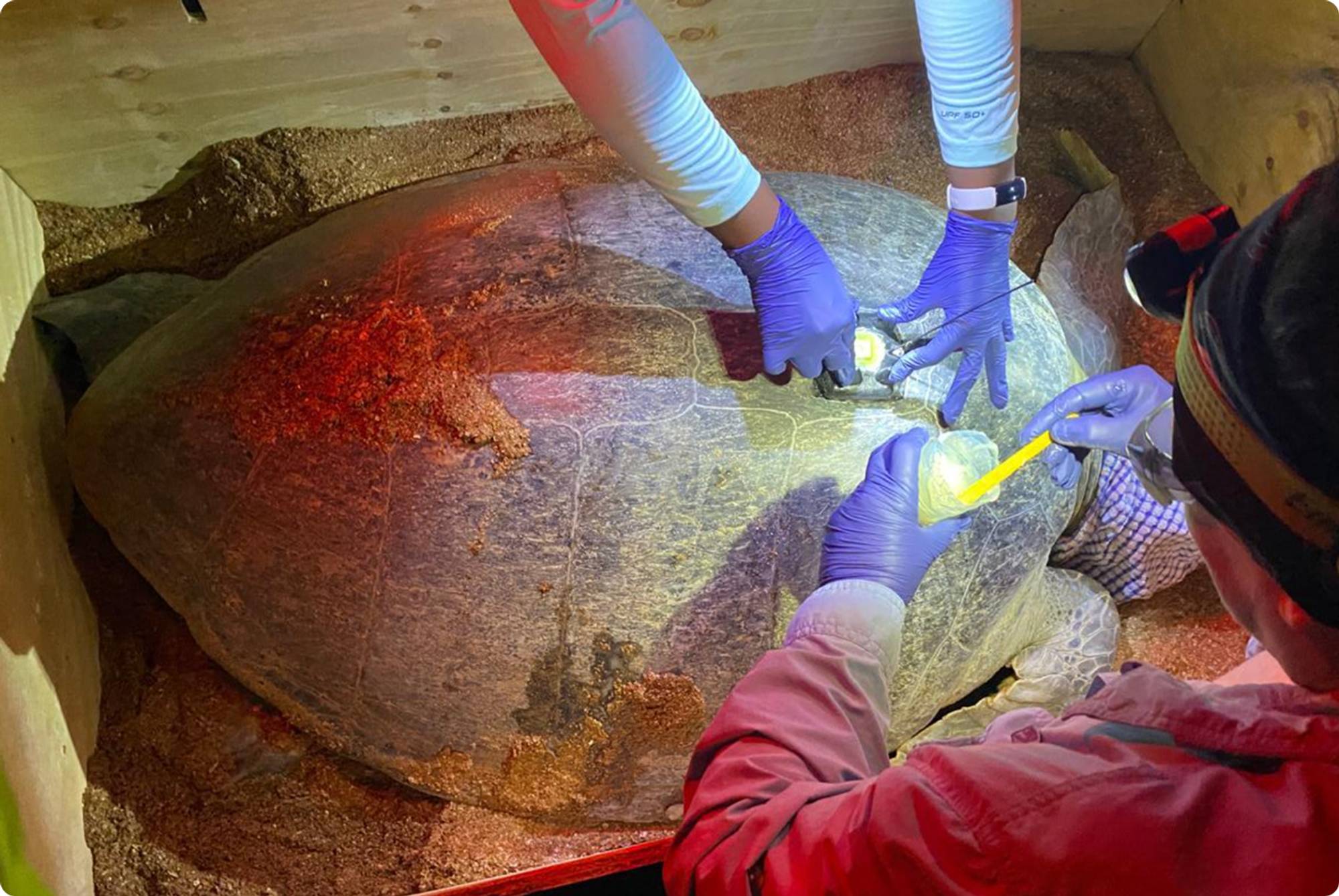
Setting up a satellite tag to track the turtle’s movements
How we protect the species
The Guyana Sea Turtle Telemetry Project is a partnership between the Turtle Conservancy, Environmental Management Consultants (EMC), local key stakeholders, and government agencies. The program aims to understand the distribution, behavior, and migration patterns of four species of marine turtles (Leatherbacks, Green Sea Turtle, Hawksbill Sea Turtle, and Olive Ridley Sea Turtle) that nest at the remote Shell Beach Protected Area.
In May 2023, the team—with members from diverse backgrounds, agencies, and organizations—spent two weeks at the area’s Tiger Beach and conducted a satellite tagging exercise. Several turtles were equipped with satellite tags and tracked to their foraging ground migrations. The team also continues surveys and conservation work involving communities in the monitoring of turtle nesting.
The Guyana Sea Turtle Project continues the legacy of Dr. Peter Pritchard, who first visited these shores in 1964 and established a successful community-based conservation program for sea turtles in the Pacific Region.









